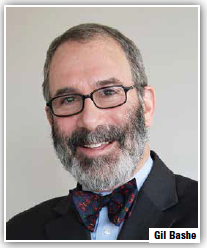Communications and Public Health
 Gil Bashe, Chair of the American Heart Association Founders’ Affiliate Northeastern Region and Head of Finn Partners’ health practice, talks about the intersection of public relations, communications, and public health.
Gil Bashe, Chair of the American Heart Association Founders’ Affiliate Northeastern Region and Head of Finn Partners’ health practice, talks about the intersection of public relations, communications, and public health.
PV: What are the challenges facing public health today?
Bashe: The question becomes who owns public health, who is willing to facilitate responses to some of our critical health needs, and who is going to pay for it. Those questions and the answers are in flux right now.
We’ve reached an inflection point in our society where now a vast majority of Americans are covered in some way, shape or form. The system is now beginning to ask the question: is it less expensive to prevent disease or manage disease? The answer’s very clear — it’s less expensive to prevent disease.
But our healthcare infrastructure, which is a very fragmented structure, is geared toward disease management. The concept of population health is about disease prevention, disease awareness, changing societal behaviors, and preventing disease from occurring in the first place.
It is in the best interest of the four major segments of the health system to collaboratively engage. Those four segments are, of course, the payer and having healthier people is less expensive than managing sicker people; the provider, which is moving from an in-patient system to an out-patient system and from a fee-for-service system to a compensation-based system; the policymaker, because we have to create policies that incentivize the system to improve health; and the pharmaceutical companies.
PV: How can each of these stakeholders address prevention?
Bashe: It’s actually far less expensive to assign case managers to patients and families, to follow up after the doctor appointment or hospital visit, and to follow up to make sure patients fill and take their medication, than the current system.
This approach starts to shift behaviors and improve patient wellness. We have found within various hotspots of illness, for example, mental health conditions in New York City, that when we assign case managers to these patients, their lives improve.
Public health is about sometimes taking very granular approaches to health problems, and it starts with communication. Communication is part of care. For pharmaceutical companies specifically, communication is important for showing the impact of the disease burden. For example, with cholesterol or hepatitis drugs, when we separate the drug from the price, it’s considered innovative. The moment we attach a price tag to the prescription, it becomes a costly medication instead of a breakthrough medication. A recent Kaiser report finds that 57% of Americans say prescription drugs have made American’s lives better. But fewer than half of the public view drug companies favorably. There is a disconnect here. The public understands the actual value of the medication; it’s the cost of the medication that baffles them.
Part of what the pharmaceutical industry needs to do is demonstrate its capacity to be a game changer on society’s health burden. We have to mobilize diverse players who have the capacity to connect information, mission, research, and behavioral change. We have to reach large corporate entities, and get them to educate their employees and even change the diet of the lunchroom menu.
There is a tremendous need for awareness of the signs and symptoms of an illness, and that’s where the American Heart Association and other organizations can partner with all types of companies to raise the understanding and awareness of the signs and symptoms of disease.
PV: How can pharma companies address this disconnect with consumers?
Bashe: Communications shouldn’t be about a product. They should be about demonstrating a commitment to improve the public’s health. Companies have to think about collaborating on their knowledge and about raising awareness and getting more people into the healthcare system. Public health and patient advocacy are about collaboration. When we work together, we make an impact.
Companies often come to the American Heart Association with ideas and they’re eager to partner with us. If the intent is partnership to improve public health, that’s a great collaboration. It works well and it does help those companies. It demonstrates that first and foremost, a pharma company’s mission is to improve the welfare of the public.
The sad reality is that heart disease and stroke are the No. 1 and No. 5 killers in men and women in this country. Heart disease will kill more people than the five most dangerous cancers combined. When we take a look at the level of awareness we create in society and the policy initiatives we have, these are conditions that we can really do a tremendous amount about from a public health perspective. We can enhance the prospects of the next generation, and obviously as a result, we can reduce the cost burden to society overall by just being exemplary communicators about awareness of the signs and symptoms of heart disease, how to prevent heart disease in the first place, how to engage, and how to get onto therapy.(PV)
~~~~~~~~~~~~~~~~~~~~~~~~~~~~~~
Heart Disease in the United States
About 610,000 people die of heart disease in the United States every year — that’s 1 in every 4 deaths.
Heart disease is the leading cause of death for both men and women. More than half of the people who died because of heart disease in 2009 were men.
Coronary heart disease is the most common type of heart disease, killing more than 370,000 people annually.
Heart disease is the leading cause of death for people of most ethnicities in the U.S. , including African Americans, Hispanics, and Caucasians. For American Indians or Alaska Natives and Asians or Pacific Islanders, heart disease is second only to cancer.
About 47% of sudden cardiac deaths occur outside a hospital. Many people with heart disease don’t act on early warning signs.
Source: Centers for Disease Control and Prevention


















